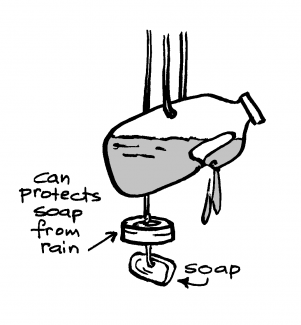Hand washing
**COVID-19 specific information**
Regular hand-washing with soap and water is one of the most important measure to prevent spread of the coronavirus, together with physical distancing. Hand-washing is life-saving, and should simply done by washing both hands with soap and water before eating or feeding, before and after going to the toilet, after touching areas frequently exposed to potential contamination. It helps protect people from catching and prevent them from spreading coronavirus.
All WASH programming should include promotion of hand-washing to every-one and should be made accessible to all and hand washing material should be adapted to everyone's use.
Hand-washing infrastructure should be put in visible places, as their visibility is a great element to engage people to use them. Key and easy-to-read messages and instructive pictures should be put close to the infrastructures.
*****************
A tippy tap hand washing system which is easy to use for everyone can be easily made using a bottle or jerry can. Thus, they can be completely constructed from locally available materials and made by the local population. However, they might be fragile and need to be replaced regularly. Do not forget to monitor them every month.
Here are some tips for a "do-it-yourself" session:
- Choose a plastic bottle of 2-3 litres with a hollow handle. Ensure the bottle has been thoroughly cleaned;
- Heat the base of the handle with a candle flame until the plastic softens;
- Squeeze the plastic closed at this spot. Use a hot nail to make a hole above this spot. Make two holes at the same level on the opposite side of the bottle;
- Use string to hang the bottle from these holes;
- Fill the bottle three-quarters full with clean water. Put the cap back on;
- Tip the bottle so that the hollow handle fills with water;
- Let the bottle swing back. The water in the handle will continue to run out of the small hole long enough for hand washing.
